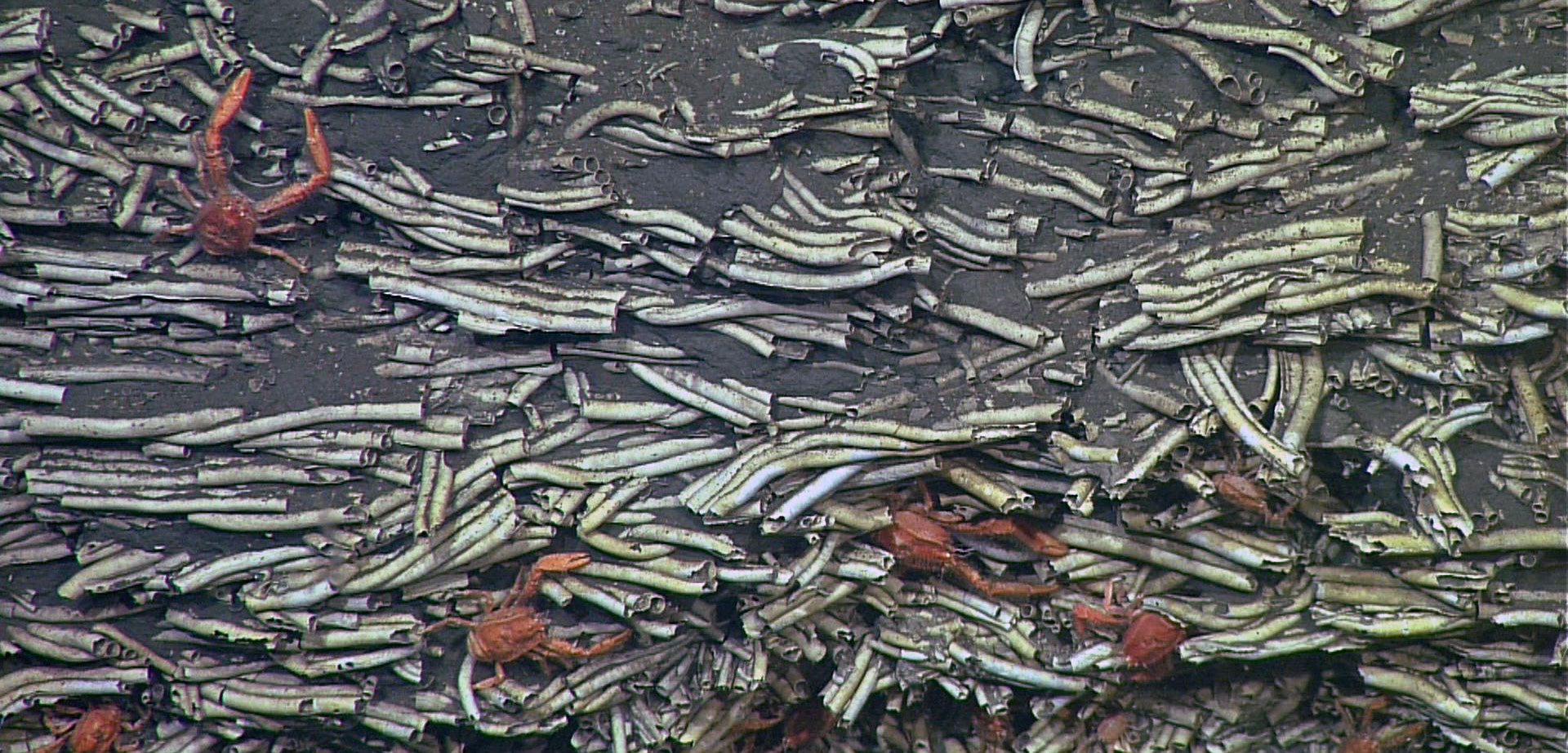The Hotel California of Fossilized Worms
Off the California coast, researchers have discovered a new species of worm that thrived in the chemical soup of deep-sea seeps.
Article body copy
Researchers exploring cold seeps and fault activity in the deep sea of Santa Monica Bay near Los Angeles, California, are accustomed to exciting discoveries, but the sight of an undersea “city of worms” scattered like a jumble of broken pencils across the seafloor was unexpected. The trove of tube worm fossils was clustered near a cold seep, where gases and fluids escape from the seafloor.
“I’d never seen anything like it, so many fossils of one particular type of tube worm all in one place,” says Magdalena Georgieva, a postdoctoral researcher with the Natural History Museum in London, United Kingdom, who worked with a team from California’s Monterey Bay Aquarium Research Institute (MBARI).
The MBARI researchers have been exploring the seafloor along the California coast for decades and although tube worms are fairly common around cold seeps, the kind they spotted that day—a type of serpulid worm—is not. The worms in these fossils flourished here around 23,000 to 25,000 years ago during the height of the Last Glacial Maximum, when herds of mastodons grazed on coniferous trees and packs of saber-toothed cats prowled the Los Angeles Basin.
Today, there are about 300 species of living serpulids. The sessile creatures build calcareous tubes and use fanlike structures to gather food particles out of the water. Serpulids live in a wide range of ocean habitats around the world, but it’s rare for them to form sizable deep-sea reefs like the one found at this seep.
The team discovered the fossils at a depth of about 600 meters using a remotely operated vehicle (ROV). “Once [the ROV] got a closer look we realized we were looking at … layers upon layers of worm tubes that were cemented together, with layers of fossil clamshells as well,” says Lonny Lundsten, senior research technician at MBARI. While clams and bacteria still thrive around the cold seep, no live serpulids do. The massive 135,000-square-meter graveyard, dubbed Fossil Hill, is a haunting reminder of better times.
The team’s discovery opened up a mystery: how did these tube worms survive in such deep water and in such vast quantities?
Most creatures living near cold seeps are chemosynthetic. Instead of being part of a photosynthetic food chain sparked by the energy of the sun, they are fueled by energy released by chemical reactions in the cold seep’s fluids and gases. But, to date, no living serpulids are known to be chemosynthetic.
If the worms did reach such astounding densities from the fluid seeps, it could “mean they may have had a close-knit symbiotic relationship with bacteria able to convert the fluids into food for the worms,” says Georgieva. “This is really interesting because such symbionts have not yet been documented to live in association with serpulid worms.” The discovery suggests the fossil serpulid is a species new to science.
The researchers think that live worms of this species might exist elsewhere in deep mounds off the Southern California coast. If they can find them, they could help solve the mystery of how the serpulids thrived and reached such astounding numbers. For now, the deep sea is holding onto its secrets.

